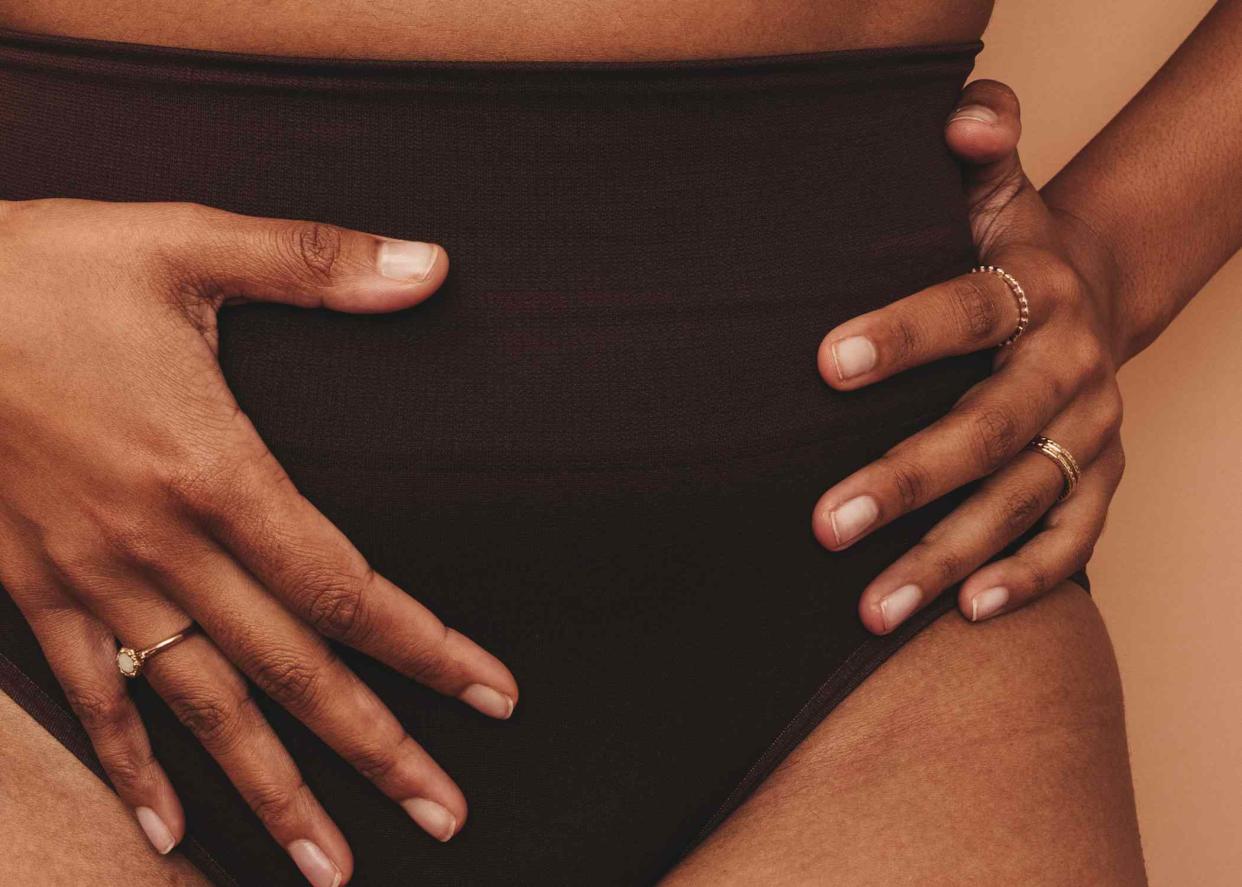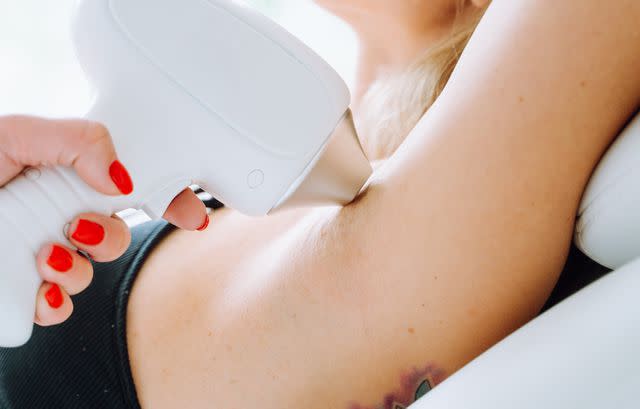I Was Terrified of Laser Hair Removal But Finally Did It—Here's Exactly What It's Like

Getty Images
From a butt facial (bacial, if you will) to getting Botox on my scalp, there aren’t many beauty treatments I haven't tried. But the one I kept avoiding is actually the one I desired most: laser hair removal. Why? Because not all lasers are created with skin of color in mind, I was terrified something could go wrong.
However, I was desperate for a permanent solution for the ingrown hairs that plagued my bikini area. Whether I shaved, waxed, Nair'd, or did absolutely nothing, the painful bumps popped up as if they were invited. And because I’m prone to dark spots after pimples (AKA post-inflammatory hyperpigmentation), ingrowns always left behind an unfriendly reminder of the irritation that was.
So, finally, I made the leap. I found a trusted practitioner who knows how to perform laser hair removal on all skin tones and hair colors, and committed to the treatments. In case you, too, are worried about the what-ifs, I’m here to share all that I’ve learned and what it’s actually like to get laser hair removal.
How Laser Hair Removal Works
"Laser hair removal emits a monochromatic beam of light that bypasses the epidermis and disables the reproductive cycle of the hair within the follicle," says Christian Karavolas, a laser hair removal expert and founder of Romeo & Juliette Laser Hair Removal. It does this by targeting the melanin in the hair follicle.
"There are three main types of wavelengths to use depending on skin tone and complexion," says Karavolas. First up is Alexandrite, a laser that's used on light skin tones one to three on the Fitzpatrick scale, which is a classification system based on the amount of melanin present in the skin with types ranging from one to six. Next is Nd:YAG, which is reserved for darker skin complexions (skin tones four to six). Finally, there's Diode, which lies in the middle. It's designed for in-between skin tones and complexions (tones two to four). These lasers are employed in a variety of different machines from various manufacturers, so your practitioner should seek out the best. According to Karavolas, those companies are Cynosure, Candela, Deka, Lutronic, and Lumenis.
"We determine what laser and wavelength to use based on the person's skin tone and complexion at the time of treatment," says Karavolas. "This may change in future treatments, depending on whether they had some sun exposure or whether they are using certain products that may make them more sensitive to laser light."
How Long Laser Hair Removal Lasts

Getty Images
"If administered properly, lasers can offer permanent results on many body areas such as the legs, bikini, and underarms," says Karavolas. "Hormonal changes can cause hair to grow back again on areas such as the face, abdomen, and upper arms, meaning more treatments may be required." He adds that clients who have PCOS [polycystic ovary syndrome] may need more sessions to achieve meaningful permanent clearance due to elevated testosterone levels, which cause excess hair growth.
To ensure the best results, it's key to go back often (about every six weeks) and to finish all the rounds your practitioner recommends. Even if you feel like your hair is gone before the end of your treatment, stopping early can result in regrowth. In total, "six to 10 treatments may be required," says Karavolas.
Does Laser Hair Removal Hurt?
To me, laser hair removal feels like you're getting snapped with a teeny tiny rubber band that happens to be on fire. I've heard others describe the feeling as akin to a bee sting. The pain intensity depends on the laser used and the area of the body in which you're receiving the treatment.
For example, it's most painful when you're going over bone, so when I'm getting my bikini area done, the pubic mound is much worse than the labia. In this vein, Karavolas says the most painful locations are the shin and the lower back. It also hurts a ton when going over ingrown hairs because the skin is inflamed, and the laser now has a long strand of hair to target instead of just the follicle.
To monitor pain, a practitioner should check in with you throughout a session to ensure you're doing okay. And for some relief, many lasers have a cooling component (like a built-in fan) that can help cut down how intense the heat feels. In my experience, squeezing stress balls and taking deep breaths helps a lot.
If you're torn about whether or not you should get laser hair removal, consider the long-term impact over any immediate discomfort. So far, I've had three sessions at Romeo & Juliette Laser Hair Removal, and it's been great. Even after the first session alone, I noticed that the hair that grew back was softer and finer. Because I have super coarse hair, I'm still getting ingrowns, but they're few and far between. While the sessions hurt, the pain is temporary, making it far more manageable than, say, having an ingrown hair that's so inflamed it's the size of a grape and makes walking painful.
How Much Laser Hair Removal Costs
"Typically, lasers cost as little as $110 for chin and upper lip, around $260 for basic bikini to as much as $800 for full legs, per session," says Karavolas.
Who Should Avoid Laser Hair Removal
"People with white hair should not get laser," explains Karavolas. "People who have certain autoimmune situations should also be cautious. Anyone on antibiotics or on medications that may cause photosensitivity should avoid laser or get clearance from their primary physician prior to laser."
Finding the Right Practitioner

Getty Images
Laser hair removal is safe and effective so long as you visit someone who truly knows what they're doing. When looking for a practitioner, Karavolas says to do your research on the facility's experience. How many years have they been in business? How many lasers do they have? Are they experienced in working with your skin tone? Does the facility have good reviews?
Because lasers target melanin, if you have lots of melanin in your skin or not so much melanin in your hair, it's especially important to go to a great practitioner. "Treating dark skin is not difficult as long as the right lasers are used," says Karavolas. "Most providers use only one type of laser and, as such, have difficulty treating darker complexions." For treating lighter hair, "we have some multi-pulse lasers that have unique beam profiles that have had notable success with lighter colored hair," he says. So going to a practitioner who knows the best types of lasers to use in any situation is key.
"Laser hair removal is an art," says Karavolas. "If done correctly, it can offer permanent results, so choose your provider carefully."
For more InStyle news, make sure to sign up for our newsletter!
Read the original article on InStyle.

